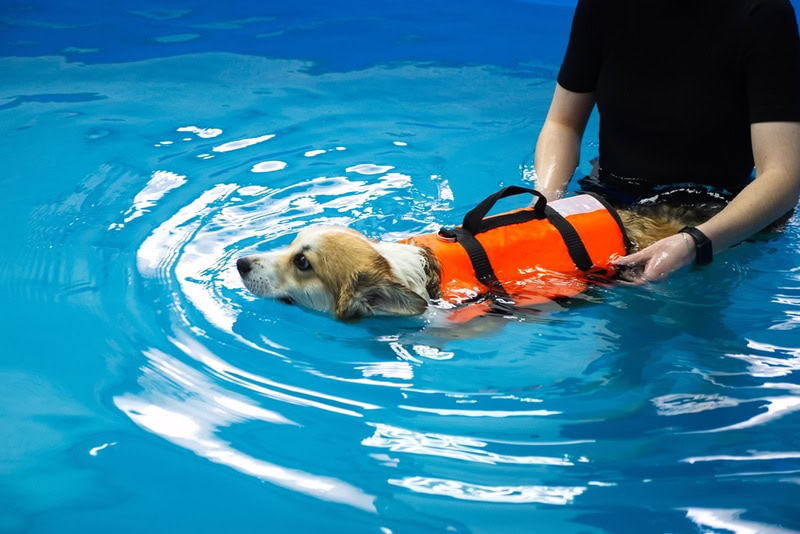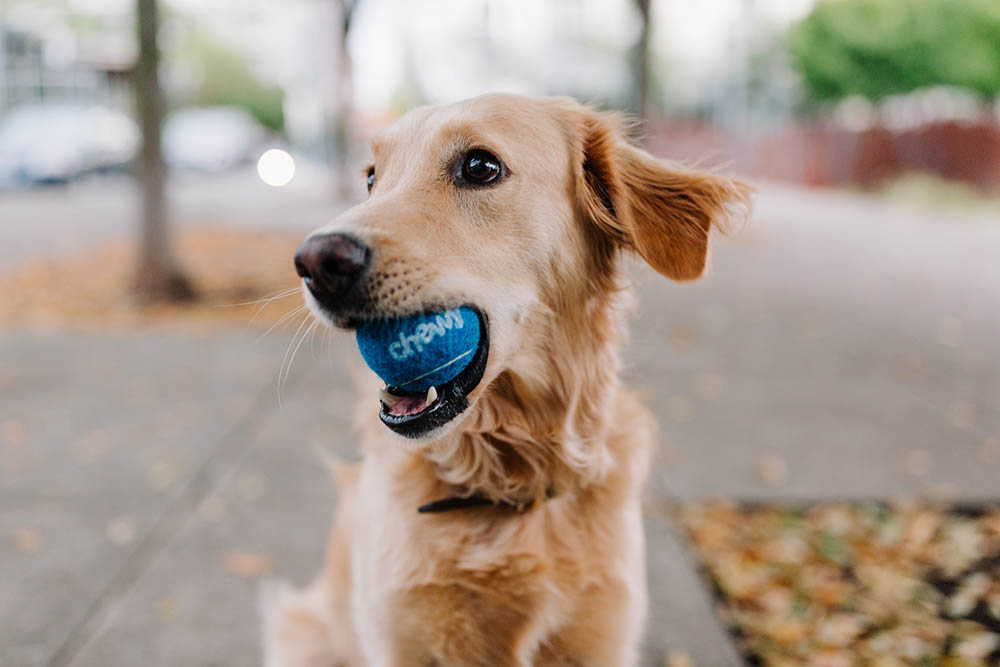VET APPROVED

The information is current and up-to-date in accordance with the latest veterinarian research.
Learn more »Click to Skip Ahead
Depending on the breed, some dogs naturally take well to water and seem to know how to swim without any help, teaching, or encouragement from others. Labrador Retrievers and Portuguese Water Dogs are good examples. Other dogs seem to have no interest in water or even feel scared or intimidated when around bodies of water, some have a physical structure that simply makes it harder for them to remain buoyant. These breeds include the Boxer and the Bulldog.
Still, no matter how they feel about it, all dogs can learn to swim, even if they aren’t naturally interested in doing so. For safety reasons, it’s a good idea to teach a dog to swim even if they don’t like water. Any time that a dog is around a source of water, there is a chance that they’ll end up in it, so they should know how to swim so they can get back to land and ensure their survival. So, how can you teach your dog how to swim? We aim to answer that question here today with these simple steps.

Why It’s Important to Teach Dogs to Swim
There are several different reasons that you should teach your dog how to swim, even if you don’t spend much time near or in the water. Whether you have a swimming pool in the backyard, enjoy the occasional picnic by the river, or spend time at the beach during the summer months, any source of water that your dog gets near (even if just occasionally) can be a danger if they don’t know how to swim.
If a dog can’t swim and finds themselves in a body of water, they could drown. Teaching your dog to swim will minimize the risk of drowning, whether in a pool, a lake, or the ocean. Here are other good reasons to teach your dog to swim:
- Improve Fitness — Swimming is a great form of exercise that is easy on a dog’s joints, which is ideal for senior dogs and those that are overweight. It can also help get rid of pent-up energy and reduce stress and anxiety levels.
- Increase Confidence — Learning how to swim can boost your pup’s overall confidence. That means they are more likely to tackle other types of challenges in life that might make them feel intimidated, like meeting new people or learning how to navigate an agility course.
- Get Rid of Pent-up Energy — Going for a swim in the pool, lake, or ocean is an excellent way for your pup to get rid of their pent-up energy. Doing so will help ensure that they don’t display any destructive behavior at home due to boredom and/or frustration.

The 6 Steps to Swimming Success for Your Canine
Here is how you can turn your dog into a solid swimmer who can hold their own no matter what type of water they’re in.
1. Invest in a Lifesaving Device
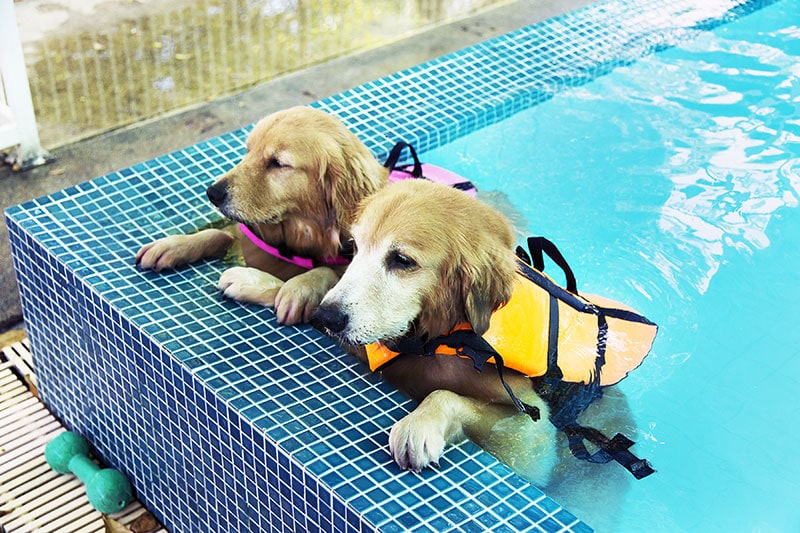
It’s a good idea to outfit your dog with either a life jacket or life vest when teaching them how to swim. Life jackets are typically bigger, heavier, and more visible than life vests, so they are best for ocean swimming. Life vests work great in calm bodies of water, such as swimming pools and lakes. A flotation device will help keep your pup from drowning and help them feel safe while they get used to being in the water. Their first experiences in the water should be as stress free and fun as possible, and a lifesaving device can help facilitate such an experience. However, it is recommended to first desensitize and train your dog to accept wearing it, and once that is accomplished, you can then introduce them to getting wet.
Choose a durable lifesaving device that won’t easily tear or succumb to damage if it gets chewed on. The device should be breathable and have reflective trim so it can be seen from afar even when in the water. Finally, make sure the device fits snugly on your dog’s body so it doesn’t slip out of place or fall off during a swim session.
2. Be Enticing, Not Demanding
It is important to entice your pup into the water with patience and encouragement. Never just throw them in the water or demand that they enter when they are showing hesitation or fear. If a dog is forced to enter a body of water when they are not ready to do so, it can cause them to become fearful of the water and make them even more hesitant to get in again. If swimming is a bad experience for your dog, the activity will do more harm than good.
You can use a clicker, a favorite toy, or treats to entice your pup into the water. Make being in the water seem fun by keeping a positive attitude. Get into the water yourself, and call your dog to you from just a foot or two from the edge. Work slowly and practice patience. Your dog should only enter the water of their own free will.
3. Provide Physical Support
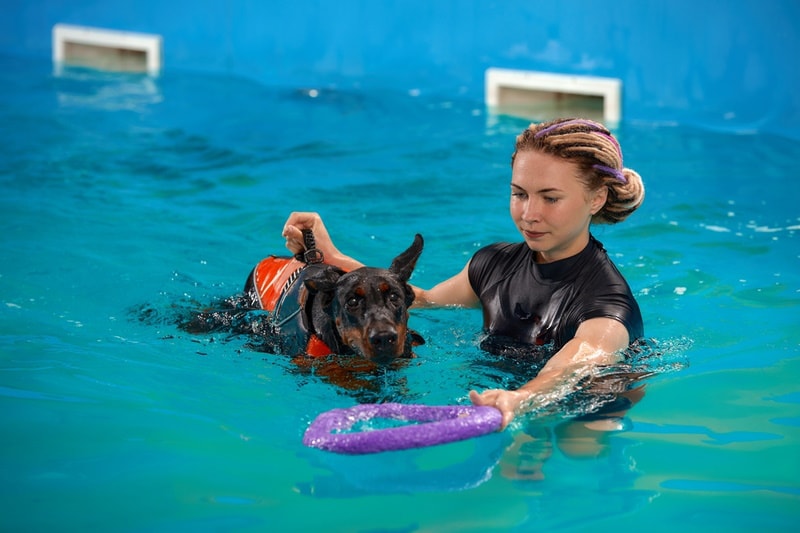
Once you get your dog in the water, hold onto the handle or a strap of their flotation device and guide them around the water while they paddle. If they seem intimidated, place a hand under their belly for extra physical support. Make sure their legs stay free so they can use them to paddle and figure out how to move through the water on their own.
Be prepared for your dog to try climbing on you to escape the water if they become panicked. If this happens, reassure them, and put them back in the water when they calm down. If they don’t calm down, head back to land and try again another day. As an additional tip, we recommend ensuring their claws are trimmed and you are wearing long sleeves to protect your skin. Once your dog gets used to paddling with your help, let go of their flotation device, and let them paddle on their own.
4. Consider Incorporating a Swimming Buddy
If possible, ask a friend with a dog experienced in water to participate in your canine’s first swimming lesson. The confidence of the dog that knows how to swim will rub off on your pup and help them understand that the water isn’t a bad place. An experienced canine swimmer can make getting in the water irresistible for your dog, especially if they love to play with the other dog under different circumstances.
5. Start in Calm Water
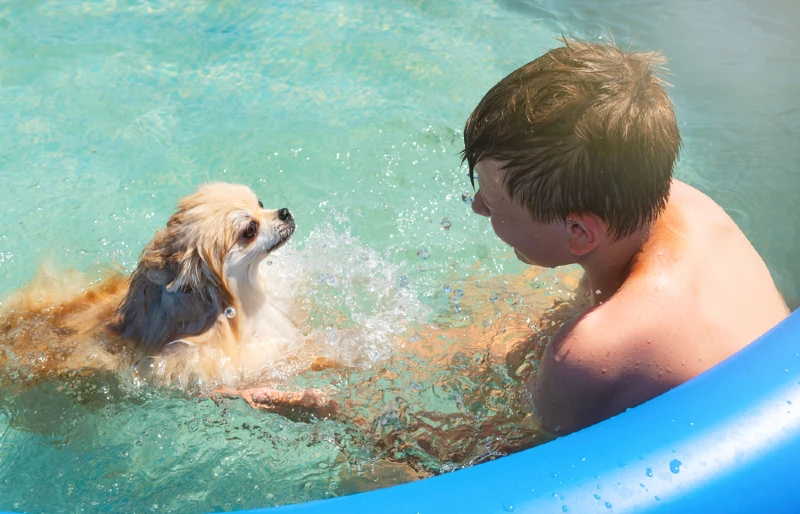
Even if you plan to take your dog to the beach, it’s important to start their swimming experience in a calm body of water that doesn’t have waves or strong currents. This will help keep your canine calm while they learn how to swim and get used to it. Any resistance that they get from waves or currents can make them feel panicked and fearful, which is never conducive to learning. Once they get used to swimming in calm waters, you can hit the beaches and rivers to practice there.
6. Don’t Forget About a Safe Exit From the Water
Some dogs don’t naturally know how to find their way out of water. Therefore, you must ensure that your pup knows how to find a way out of the water that they are swimming in. Otherwise, they could become exhausted and start to sink when you are not looking, which increases the danger of drowning. Guide your dog to the exit, and teach them how to get out on their own from any body of water that they swim in.

Safety Tips to Keep in Mind During Swimming Lessons
- If the water is too cold for you to comfortably swim in, it’s likely too cold for your pup. Make sure water temperatures are comfortable to avoid the risk of hypothermia.
- Keep swimming lessons short, at least in the beginning, to ensure that your dog doesn’t get too tired and that they don’t swallow too much water while learning to paddle. Set a timer for 10 minutes and call it a day or at least take a break when it goes off.
- Make sure that fresh, clean drinking water is immediately available to your dog when they get out of the water. This is especially important when swimming in the ocean due to the high salt content.

In Conclusion
Many dogs can swim naturally, but those with short legs, bulkier body structures, and flat faces might need a flotation device to help them remain buoyant. It can take extra coaxing and teaching for some pups to become confident and stay safe in the water. There are many good reasons to teach your doggy to swim, and hopefully, with the help of these tips, they will be doing so in no time.
Featured Image Credit: Yekatseryna Netuk, Shutterstock
